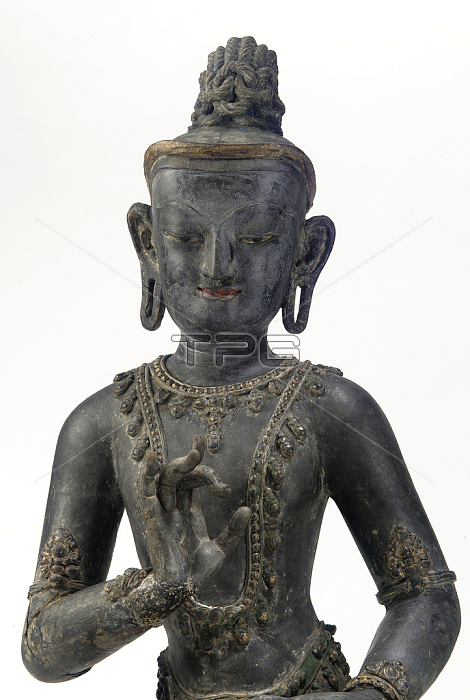
3533787 Nepalese-Chinese-style bodhisattva (lacquer, cloth, traces of blue, gold, and green paint & gold leaf) by Chinese School, Yuan Dynasty (1279-1368); 58.5x43.3x29.5 cm; Freer Gallery of Art, Smithsonian Institution, USA; (add.info.: Made in China, the style of this bodhisattva (enlightened being) is Nepalese, while the lacquer technique is Chinese. In the thirteenth century, the Mongol ruler Khubilai Khan (1215-1294) invited eighty Nepalese artist-monks to China to construct and adorn a monastery. One of the artists, the renowned Aniko, remained in China and founded the workshop in which this bodhisattva was undoubtedly made. The lacquer technique used is the "dry lacquer" technique, in which several layers of lacquer-impregnated cloth are arranged over a rough clay core and the finishing details are modeled in a paste-like lacquer mixture. Thin iron rods help support fragile parts. When the lacquer dries, the clay core is removed, leaving an exceptionally light sculpture for its size. This image was once painted and gilded, but only traces remain.); Freer Gallery of Art, Smithsonian Institution; Purchase - Charles Lang Freer Endowment; Chinese, out of copyright.
| px | px | dpi | = | cm | x | cm | = | MB |
Details
Creative#:
TOP27576734
Source:
達志影像
Authorization Type:
RM
Release Information:
須由TPG 完整授權
Model Release:
No
Property Release:
No
Right to Privacy:
No
Same folder images:

 Loading
Loading